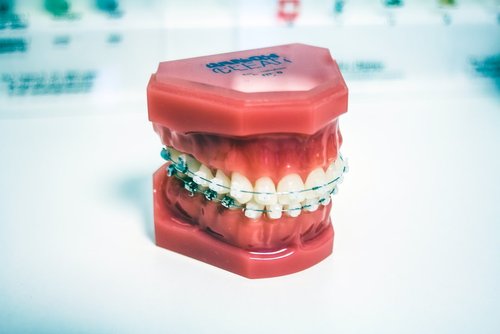If you’re hesitant about getting adult braces, don’t worry; you’re not the only adult who needs them. In fact, 20% of the people with braces today are adults. However, many people don’t realize they need to visit an orthodontist for treatment.
Here are a few signs to talk to your orthodontist about treatment with braces. After reviewing this guide, you can make an informed choice regarding your oral health.
Keep an eye out for these signs you need to start orthodontic treatment!
CROOKED TEETH
If you feel insecure about your teeth, you’re among the 70% of adults in America who feel the same. These insecurities have led to 61% of Americans wishing they could change something about their teeth. One of the top concerns is crookedness.
Take a look at your smile in the mirror. Do any of your teeth jut out at an awkward angle? If your teeth appear unaligned or crooked, it’s time to talk to your local orthodontist.
If you have a crooked tooth and get into a car or sporting accident, you could sustain serious injuries. For example, the tooth could get knocked out. It might scratch the inside of your gums, causing your mouth to bleed.
Your crooked teeth could also make you feel self-conscious enough that you’ve started to hide your smile. Smiling can boost your mood and appearance.
It can make you appear more inviting in social settings, too. Meanwhile, having that self-confidence can encourage you to take risks in social settings.
You might feel more inclined to go after a job promotion or ask someone out on a date.
Crooked teeth are even more difficult to brush and floss. When you don’t thoroughly clean away bacteria and food particles, plaque can form. Your risk of tooth decay or gum disease will increase if you’re neglecting your dental health.
If your crooked teeth are causing you to feel self-conscious, talk to your local orthodontist. Traditional metal braces can pull your teeth into alignment and straighten your smile. You can start grinning with renewed confidence after orthodontic treatment.
AN OVERBITE
If your top teeth appear atop your bottom teeth, you might have an overbite. A minor overbite is normal. However, a severe overbite can compromise your oral health.
Bite down and check your smile in the mirror. Consider how much of your lower teeth remain visible when you smile. If your lower teeth are almost entirely hidden, it’s time to consider adult braces.
Maybe your top teeth protrude outward, over your lower teeth. In this case, you have an overjet, which can increase the likelihood of oro-dental trauma (damage to the teeth, mouth, or oral cavity). Most oro-dental traumas occur due to tooth misalignment issues.
Over time, your teeth might experience severe wear and tear, compromising your protective tooth enamel. Without protective enamel, your risk of tooth decay will increase.
Talk to your local orthodontist if you have overlapping teeth. They’ll ensure you begin treatment right away. Your orthodontist can customize your treatment plan based on your oral health needs and goals for a healthier smile.
AN UNDERBITE
An underbite is the opposite of an overbite. In this case, your bottom teeth overlap your top row of teeth. It’s important to start orthodontic treatment with braces before your underbite develops more.
An underbite can make it more difficult for you to chew food thoroughly. Swallowing large chunks of food will give your digestive system more work to do. You may begin experiencing digestive issues as a result.
Over time, a severe underbite can also alter the appearance of your face. It can accelerate the aging process, causing wrinkles and fine lines to develop.
Improving your smile with orthodontic treatment can help you resolve your underbite before it causes additional issues to your oral health or appearance.
A CROSSBITE
If one of your upper teeth crosses behind a lower tooth, you have a crossbite. When left untreated, crossbites can cause asymmetric jaw growth. Accelerated tooth wear can occur, increasing your risk of tooth decay.
You might notice your gum line is receding away from your teeth, too, which can increase your risk of gum disease.
Your orthodontist or dentist might also determine you have a temporomandibular joint (TMJ) disorder, which might cause you jaw pain instead. If you’ve started to grind your teeth (bruxism), talk to your orthodontist about treatment.
Braces can help fix your crossbite by aligning your teeth. In severe cases, however, your orthodontist will need to realign the jaw instead.
PAIN WHEN CHEWING
Have you noticed your jaw hurts when you chew? Maybe you hear a strange clicking sound when you chew instead. Some patients also start biting their tongues or cheeks due to alignment issues as well.
If these problems sound familiar, talk to your orthodontist about treatment with traditional metal braces. Your orthodontist will determine if you have misaligned teeth before recommending a course of treatment.
GAPS
Gaps between your teeth can make you feel self-conscious as well. Traditional metal braces can draw your teeth together to close these gaps. You can straighten your smile and feel more confident about your appearance with orthodontic treatment.
When left untreated, gaps between your teeth can give bacteria and food particles new places to hide. You might struggle to thoroughly brush and floss, potentially leading to tooth decay.
VISIT YOUR ORTHODONTIST TO DISCUSS ADULT BRACES TODAY
Don’t let these orthodontic issues keep you from living a happy, confident life. Instead, talk to your local orthodontist about adult braces. They can help you determine if you’re an ideal candidate for treatment.
With help, you can straighten your smile in no time.
Ready to schedule your appointment? We can’t wait to see you.
Contact us today to get started.


Recent Comments